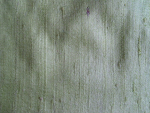|
Silk Fabric – Beauty From The Queen Of Fibers
Silk fabric is made from the queen of fibers. Silk fabric is made from what is considered the only natural filament fiber. Silk is considered stronger than steel, is made by living creatures, silk worms, and is said to be more resilient than elastic.
The silk family of fabrics is a large one, consisting of such fabrics as brocade, charmeuse, chiffon, China silk, Crepe de Chine, douppioni, faille, georgette, jacquard, jersey, moiré, organza, peau de soie, satin, Shantung, taffeta, tapestry, Thai silk, velvet and voile, just to name a few.



Fabric Characteristics:
• The most luxurious of the fibers • Comfortable to wear, it is cool in summer and warm in winter • Warm but lightweight • Resilient and elastic, it holds its shape • Resists wrinkling • Silk resists static buildup • Absorbs moisture and dries quickly • They dye and can be printed on well • Does not pill easily • Does not soil easily • Resistant to mildew, but susceptible to moth and other insects • Cannot be bleached with chlorine bleach, but can be bleached with hydrogen peroxide or sodium perforate type bleaches • Weakened by sunlight, and yellows with age • Is damaged by perspiration or body oils • Silk fibers don’t shrink; however, some silk fabrics do shrink • Most require dry cleaning, but some can be laundered depending on the fabric structure, finish, dye, and garment structure • Is easily damaged by strong soaps and detergents, acids and alkalis • Easily damaged by hot irons and improper pressing
Working With These Fabrics Requires:
• Sewing machines needles recommended are 60/8-90/14 sharps, universals and stretch needles depending on fabric weight and structure • Hand sewing needles recommended are sizes 5-10 • Sewing machine settings recommended are a stitch length of 1.75-4 mm • Sewing machine foot is the standard foot • Thread recommended is all-purpose cotton, cotton/polyester; for top-stitching all-purpose fine cotton or silk thread • Marking tools recommended are all types, except wax and temporary marking pens • Tools and equipment recommended is sharp scissors, sharp shears, rotary cutter and mat, superfine pins, small safety pins, fabric weights, and fabric stabilizers • Seams and hems depend on the fabric weight, garment, and care requirements • Interfacings, linings, and underlinings depend on fabric weight, garment, and care requirements
These Fabrics Are Suitable For:
Silk is suitable for all types of garments from lingerie and sleepwear to suits and coats.
For information about the notions, tools, and equipment required to complete a sewing project, click here to view the sewing notions home page
For more information about this family of fabrics some great references are:
Claire Shaeffer’s Fabric Sewing Guide
All About Silk – Julie Parker’s Fabric Reference Series For more interesting information about silk fabric click here on Wikipedia.org and click here on ehow.com for information about how silk is made into fabric
To continue exploring information about fabrics follow the links below. Suede Fabric
|




